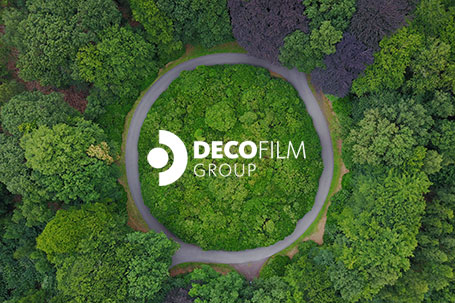Circular economy: but what is it really?
The circular economy is a model of production and consumption based on the reuse, reconditioning and recycling of existing materials and products, aimed at extending the products’ life cycle, with the final goal of helping to reduce waste to a minimum.
After the use of the product, the materials it is made of are re-introduced, if possible, into the production cycle, generating further value.
Especially in recent years, the circular economy has become the unique choice. The problems related to resource consumption and waste disposal have sped up a new model of economic production, different from the linear version, based on "extract, produce, use and throw" scheme.
Circular economy applied to the plastics industry
Considering the application of the circular economy to the world of production and use of plastic products, we realize that the diffusion of this model has only begun its spread.
Decofilm is a forerunner in this field, interpreting the needs of the circular economy through application of 4 main guidelines.
1. REDUCTION of thickness
The thickness of the film for packaging is one of the main feature to act on to obtain a product compliant to the circular economy. It determines both the amount of material necessary for its production, and its weight (and consequently the production of CO2 emitted for their transport).
Decofilm's solution:
- Reduction of thicknesses and weights with reverse density < 1 g/cm3
- Production of thicknesses among the lowest on the market (9 microns)
2. USE OF RENEWABLE materials
Today the most important challenge in the production of packaging films is to identify a raw material with the same qualities of plastics, but with less environmental impact. Many companies have presented their performing solutions on the market.
In our opinion, it is important that the materials used should be renewable but also that they maintain, or even exceed, the performance of traditional ones.
Decofilm's solution:
- Use of bio-based polymers with negative carbon balance
- I'M GREEN Braskem certification > 50% PE Bio based sugar cane
3. USE OF RECYCLABLE materials
What is the difference between a renewable and a recyclable material?
A renewable resource is naturally reconstituted and so it is constantly available without external human influences. Instead, a recyclable resource can be used several times, but before must go through an appropriate process.
Decofilm's solution:
- The 100% of our retractable product ranges is recyclable
- Interseroh Fraunhofer Certification
4. Adoption of a RESPONSIBLE business ethic
The circular economy is not just a matter of products and processes, but it is about mentality. For this reason we believe that, to project its commitment in the right direction, a company must first build its ethics. Sustainability is our precise responsibility, not only as people of the world, but also as agents operating in the industry, and playing an active and proactive role in this field.
Decofilm's solution:
- Eco friendly products and processes, with up to 70% integration of post-production recycled polymers and use of phthalate-free polymers, for a systematic contribution to a better use of resources.
In conclusion, we can say that the commitment a company put to align itself at circular economy can be a measure of its professionalism, next – of course – other parameters.
We are proud of the path that we have taken in this field for years, as well as the results achieved.
DECOFILM invite you to touch them with hand.
